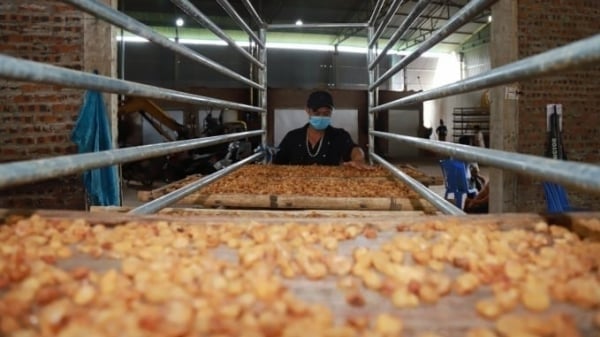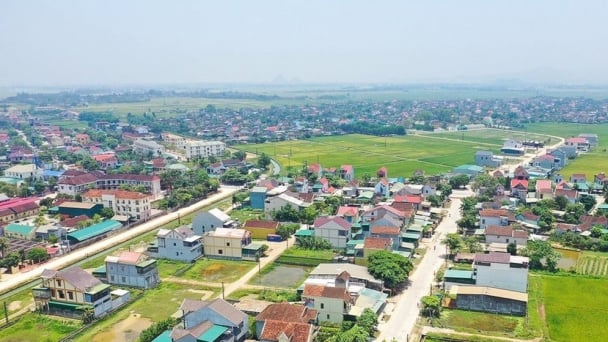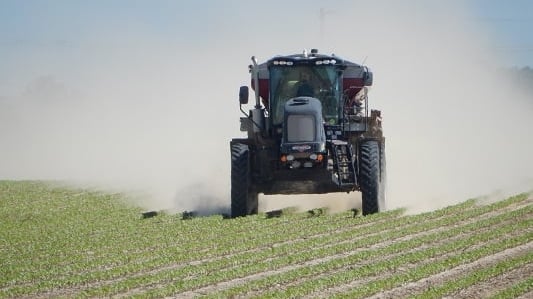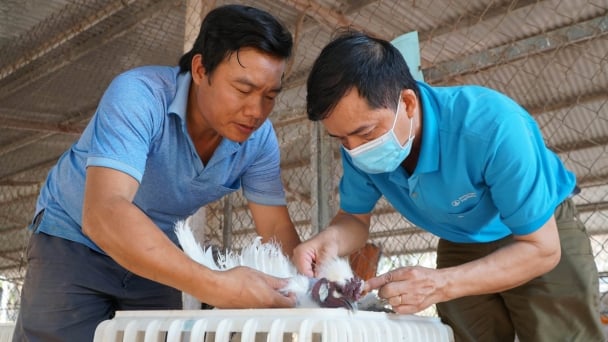May 16, 2025 | 10:02 GMT +7
May 16, 2025 | 10:02 GMT +7
Hotline: 0913.378.918
May 16, 2025 | 10:02 GMT +7
Hotline: 0913.378.918

The anticipated tariff disputes, led by the incoming Trump administration in the United States, are set to target imports from China, Mexico, Canada and many other countries.
The prospect of new tariff disputes following Donald Trump’s return to the presidency in the United States, ongoing geopolitical tensions and continued climate change-related challenges are expected to significantly impact agricultural trade and producer profitability worldwide in the upcoming year, according to a Rabobank report.
In its Agri Commodity Markets Outlook 2025, released Dec. 17, Rabobank examined a variety of factors that would likely impact global agricultural commodity markets, including the anticipated tariff disputes, a reduction of grain production and exports in war-torn Ukraine, and a short and weak La Niña weather pattern.
The anticipated tariff disputes, led by the incoming Trump administration in the United States, are set to target imports from China, Mexico, Canada and many other countries.
“This move threatens to compress margins for farmers, particularly those producing major grains and oilseeds, which have already seen price declines in 2024,” said Carlos Mera, head of Agri Commodity Markets Research at Rabobank.
The report noted that the United States imported $195 billion worth of agricultural products in 2023, a 280% increase over the past two decades. Potential retaliatory measures from China could further exacerbate the situation, with US soybean exports likely to be targeted.
With soy prices down 25% over the last year, retaliatory tariffs could put US farmers under significant additional financial strain, Rabobank said. The US government may consider compensatory measures, but until such measures are announced, uncertainty prevails, it said.
The global economic landscape in 2024 has been shaped by falling inflation and moderate economic expansion. However, Mera said, “the implementation of US tariffs would raise the risk of fragmenting global trade and financial flows, potentially also affecting the availability of US dollars in the rest of the world. Developing nations with high dollar-debt exposure could be particularly at risk. In principle, a strong dollar means lower prices for all dollar-denominated commodities.”
The US Federal Reserve and the European Central Bank have cautiously reduced policy rates, but further cuts may be limited due to rising inflationary pressures, he noted. The combination of US tariffs and tax cuts is likely to push inflation higher, potentially curtailing the Fed’s ability to cut rates much further next year.
The war between Russia and Ukraine, which has been fought mostly on Ukrainian soil since February 2022, is starting to take a toll on the country’s ability to produce and ship grain, the report said. Despite the ongoing war, Ukraine has managed to continue exporting agricultural commodities via its Black Sea corridor. The corridor, which hugs the western coast of the Black Sea, has been remarkably successful, allowing Ukraine to continue shipping its exportable surplus. However, the country faces significant challenges, including labor shortages, adverse weather, and low stock levels at the start of the current export season, Mera said.
“Even without additional Russian aggression, Ukrainian agricultural exports are expected to decline moving forward,” he said. “When it comes to wheat, there is also a major risk of Ukraine targeting Russian ports, which are responsible for roughly 23% of global wheat exports.”
Long-term climate change trends will continue to affect agricultural productivity, with varying impacts on different crops and regions, Rabobank said. Warmer temperatures are lengthening growing seasons in northern regions, leading to higher yields, while negatively impacting production in low latitudes. Future projections indicate strong negative effects on corn yield, while wheat may benefit from higher CO2 concentration levels and expanded planting area in high-latitude regions, with potential yield gains, the report said.
A short and weak La Niña weather pattern is expected by the turn of the year, though some effects are already visible, such as delayed rainfall in Brazil and dryness in Argentina and the southern US, Rabobank said.
“The mild intensity of this potential event suggests impacts will be limited,” Rabobank said. “However, the delay in Brazil’s soybean harvest will push back safrinha corn planting, potentially pushing the corn maturation into the start of the next dry season. Currently, weather conditions in the US, Ukraine, Argentina and Russia have improved, offering a better outlook for the upcoming wheat season.”
Rabobank noted that while the world enjoys relatively ample corn and soybean stocks heading into 2025, wheat inventories are worth keeping an eye on.
“On a global scale, the stock-to-use ratio of major exporters is dwindling and expected to drop to 24.5% in 2024-25, the lowest level since 2013-14, when it was 22.8%,” Rabobank said.
Depending on how various factors play out, Rabobank said it could see wheat prices increasing to as high as $7.5 per bushel in 2025.
Rabobank said the global soybean market is heading toward a record surplus for the third consecutive year following a record crop in the United States and a good outlook for South America’s harvest.
With inventories at an all-time high and demand from China, the world’s largest soybean importer, levelling off, Rabobank said “prices are quite likely to continue to suffer, even without the prospect of trade wars.”
(WG)

(VAN) Vietnam's draft amendment to Decree No. 156 proposes a mechanism for medicinal herb farming under forest canopies, linking economic development to population retention and the sustainable protection and development of forests.

(VAN) In reality, many craft village models combined with tourism in Son La have proven effective, bringing significant economic benefits to rural communities.

(VAN) The international conference titled Carbon Market: International experiences and recommendations for Vietnam was successfully held recently in Ho Chi Minh City.

(VAN) According to the Project on rearranging provincial and communal administrative units, in 2025, the country will have 34 provinces/cities, 3,321 communes, wards, and special zones, and no district-level organization.

(VAN) The vice president of fertilizer with Stone X Group says the Trump administration’s tariffs are impacting fertilizer markets.

(VAN) Resolution 57 offers Vietnam a significant opportunity to narrow the global genetic technology disparity and convert its extensive genetic resources into commercial advantages.

(VAN) The Ministry of Agriculture and Environment will prioritize the implementation of five core and breakthrough solutions in science and technology, in addition to the seven groups of tasks identified in Decision No. 503.